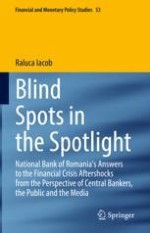This book brings under a magnifying glass a little explored, but significant topic - the communications changes of the National Bank of Romania after 2008. Given the similarities and differences between central banks’ mechanisms and practices adopted, its applicability and impact for other actors are incontestable. The research incorporates valuable details on how the National Bank of Romania’s communication changed during the Great Recession of 2008, as well as insightful data about the way in which different categories of public and media perceived this change. The timeliness and significance of this research are noticeable as the central banks already entered a new era of communication challenges triggered by the Covid-19 pandemic and recently by the Russia – Ukraine war. Lessons from the past can contribute to what researchers name the second revolution in communication, focusing on opening the central banks to the public and regaining trust, especially in such a difficult period.
